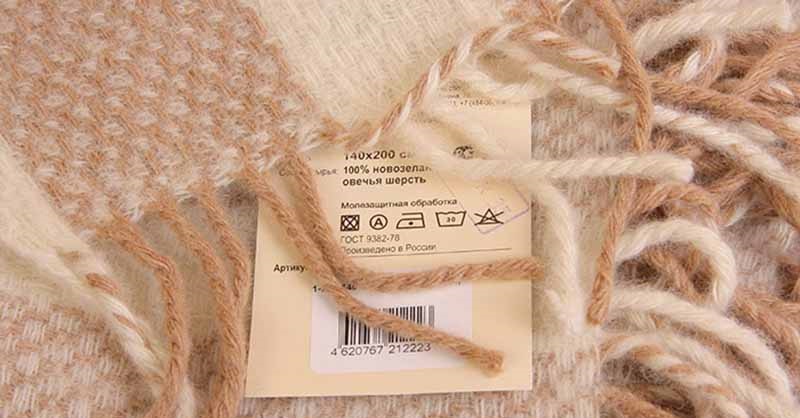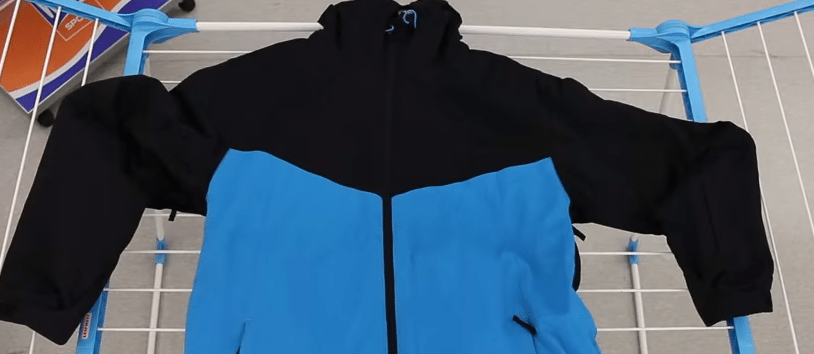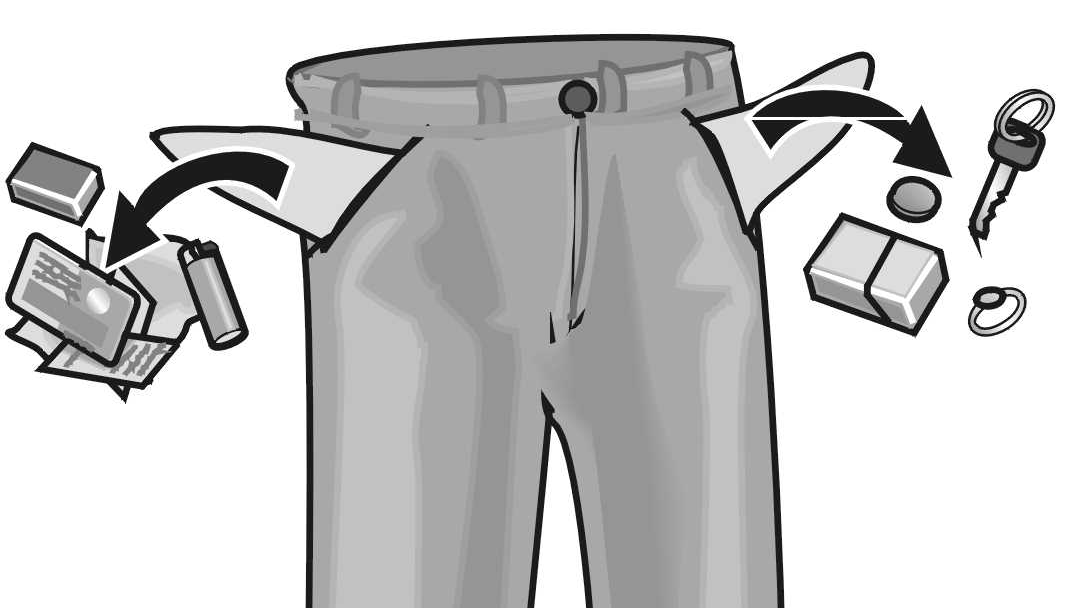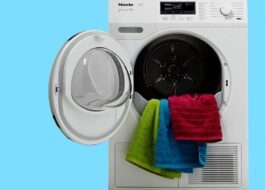Drying towels in the dryer
 The official user manual helps in almost any situation when a person has a question about the operation of his favorite “home assistant”. However, it is not always possible to find hints about specific products in the instructions. For example, how do you dry towels in a dryer? Let's look at this important process, as well as the processing of many other non-standard items in the dryer.
The official user manual helps in almost any situation when a person has a question about the operation of his favorite “home assistant”. However, it is not always possible to find hints about specific products in the instructions. For example, how do you dry towels in a dryer? Let's look at this important process, as well as the processing of many other non-standard items in the dryer.
Towel program
First of all, it is worth noting that drying towels must be carried out in compliance with standard operating rules for drying machines. The user must load a strictly limited number of items into the drum to prevent overload. You also need to consider the type of fabric, its moisture content, as well as other factors that may affect the load size and the choice of drying mode.
If we are talking about linen towels, then they can withstand processing in the dryer very well, but we must not forget that they often suffer from shrinkage, so they cannot be dried in high temperatures. They should use delicate settings and temperatures of 45 degrees Celsius or lower.
Cotton items can be easily dried using standard modes and the bed linen program. The only important clarification is that it is better to wring things out first so that the working cycle is more efficient. Do not over-dry cotton towels to prevent them from becoming too stiff and scratchy.
Bamboo towels are much more high maintenance than cotton towels.Such products should not be over-dried or processed at high temperatures, unless you want to end up with an overly hard towel that has lost its basic properties. For such things, it is better to choose the most delicate drying modes.
Finally, synthetic products should be processed in a mode that is called “Synthetics”.
Items incompatible with the dryer
Towels are not on the list of items that should not be dried in the dryer. It is only important to wash and wring them well first. But the list of things incompatible with automatic drying includes many other products from different materials and fabrics that may become unusable after a cycle in the dryer.
- Items made from delicate fabrics such as silk, lace, chiffon and tulle. Such clothes can stretch or, on the contrary, be damaged due to excessive shrinkage. In addition, the seams of dresses and lingerie may become very crooked, and their color may fade and become dull.
- Wool products. After processing in the dryer, the item may become several sizes smaller. That is why it is better to either dry wool naturally, hiding it from direct sunlight, or using the most delicate dryer modes.

- Clothes made of suede. Heat and mechanical friction create creases in items, which make the items appear shabby and old.
- Fur items. Fur tends to tangle and fall out during drying. Therefore, if your fur coat gets wet due to rain or snow, it is better to hang it on a hanger and leave it to dry naturally, not forgetting to comb the fur along the pile line.
- Nylon tights.Polyamide fiber changes shape greatly when processed at high temperatures, so it is better not to dry it automatically.
- Leather clothing. Processing in the dryer causes tarnishing of the leather, as well as the appearance of cracks and salt stains. It is better to dry leather shoes, jackets, skirts and other wardrobe items at room temperature.
- Membrane fabrics. Such materials are used to create sportswear and children's clothing and shoes. It is not recommended to heat it, as it will lose all its water-repellent properties, for which it is valued by athletes and mothers.

- Rubber products. This item includes sneakers with rubber soles, raincoats, boots and much more that suffer from shrinkage due to high temperatures. The same goes for foam inserts in bras and rubberized mats, which can become deformed during drying.
- Items with fine inserts and elaborate finishing. Strong rotation of the dryer drum can cause damage to such things, on which either snags will appear, or all metal inserts will simply fall off. As for plastic elements placed on glue, they can melt and deform, just like the glue itself.
Be careful with small parts on clothing - bra underwires and other small parts can puncture the tub and damage the dryer.
- Items impregnated with dangerous compounds. This applies to any workwear and towels that have been exposed to gasoline, acetone, alcohol, paint and other harmful compounds. Products with such stains can not only ignite, but also emit explosive vapor. Also, do not dry kitchen towels that have been exposed to vegetable oil, because it also burns well.
- Dirty clothes.Finally, it is not recommended to dry items that have not been pre-washed in the washing machine. This is due to the fact that the filters of the dryer will become clogged with dirt, which is why in the future all clothes coming out of the dryer will have an unpleasant musty smell. Also, do not dry poorly washed clothes with stains from grass, fruit, wine or blood, because in this way the stains will only penetrate deeper into the fibers of the fabric and remain there forever.
The list of prohibited clothing is not as long as it might seem at first glance, so it is not difficult to remember it so as not to accidentally damage your favorite things or the home assistant itself.
Preparing items for drying
It is not enough to know the list of things that should not be dried in a machine; you also need to know the rules for preparing clothes for processing in a dryer. It is very important to sort items correctly, which will help achieve ideal drying results. How is this sorting carried out?
- Color. If bright clothes touch white ones in the drum, they may change color. That's why dark and colored items need to be dried separately from light ones. In addition, if the clothing does not change its color during the process, then there will still be lint on it - white on black, and black on white.
- Fabric structure. This is due to the fact that different fabrics can be dried at different temperatures. For example, cotton can be processed at 60 degrees Celsius, while wool can only be dried at 30 degrees. Therefore, these products must be dried on two different programs.
- Fabric thickness. You should not dry thick fabrics with thin ones at the same time, because they need different times to dry completely.By setting the maximum drying time for a drum with items with different fabric thicknesses, the user will receive partially dry and partially overdried laundry. If you set the minimum time, then some of the clothes will dry, and some will remain wet, so you will have to dry them again.
- Easy to crease. Some items cannot be folded, so they need to be dried separately from others. This applies to children's toys, bags, and shoes, which must be placed in special baskets and dried in a blower mode in which the drum does not rotate.

- Size. It is necessary to dry large items, such as jeans, sheets and duvet covers, together with small ones so that bulky items do not fall to one side of the drum and do not bunch up into one big lump, but are regularly broken up by small items such as T-shirts and socks.
Be sure to fasten all duvet covers and pillowcases to prevent small items from getting stuffed inside.
- Seam strength. It's best not to dry items with strong stitching together with pillows and blankets, as lightweight stitching can become damaged when rubbing against rough items such as jackets and jeans. In this case, the threads will unravel, so all the filler will spread throughout the drum, getting into the cells and creating a fire hazard.
At the same time, it is not enough to sort the clothes correctly before the work cycle; it is also important to prepare them for processing first. There are few points, but they are all extremely important.
- Inspect all pockets and remove unnecessary items. Pens, lighters, coins, banknotes, cash receipts, paper clips, keys - all this needs to be removed, as it can melt, explode or get into the holes of the drum, causing it to fail.

- Close all zippers and hooks on your underwear.It's also worth removing bones from bras, as they can catch on clothing and tear it. Check the buttons to make sure they are securely sewn on, otherwise they may come off during operation and penetrate into the internal components of the dryer.
- Turn your garments inside out so that the zippers and buttons are on the inside, which will help prevent snags and color fading on the front of your items.
- Place items in the drum evenly, gently smoothing them with your hand, straightening out creases, and remembering to shake them first.
As you can see, not only are there not many rules, but they are all very easy to follow. All of them will help you keep your clothes and dryer intact.
Interesting:
Reader comments
- Share your opinion - leave a comment
Categories
Washing machine repair


For buyers

For users

Dishwasher

















Add a comment